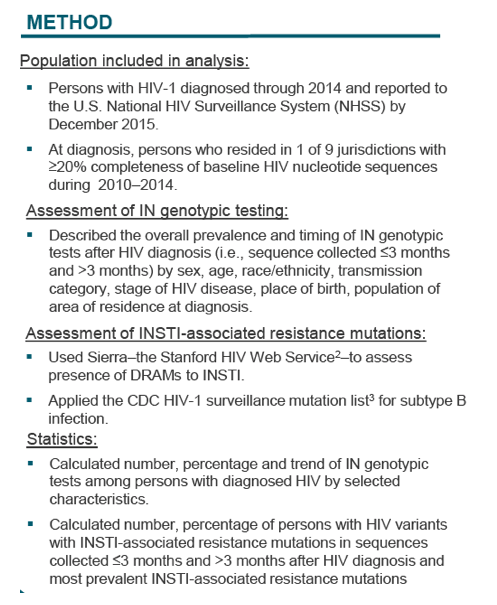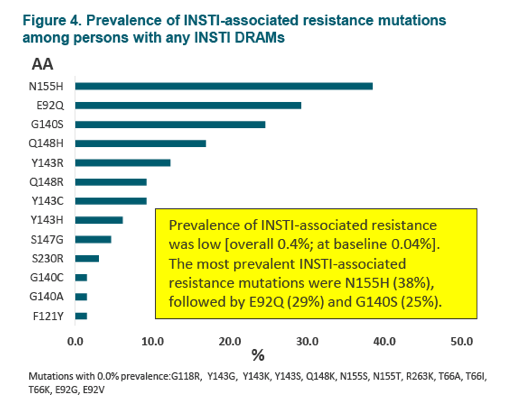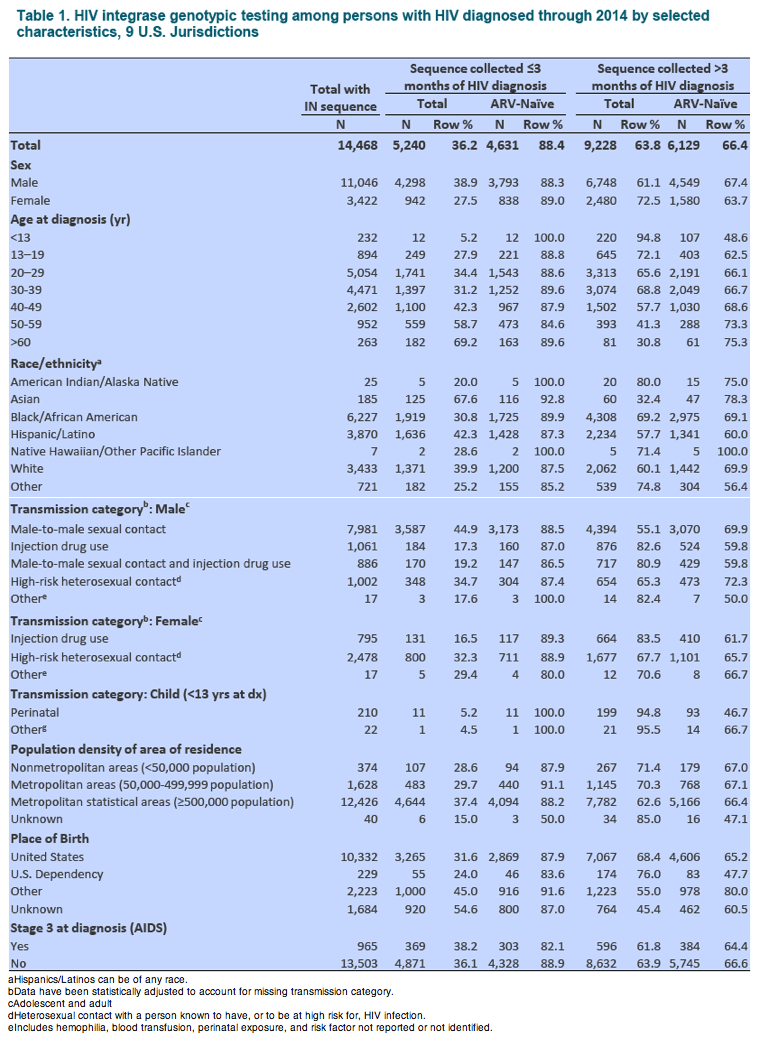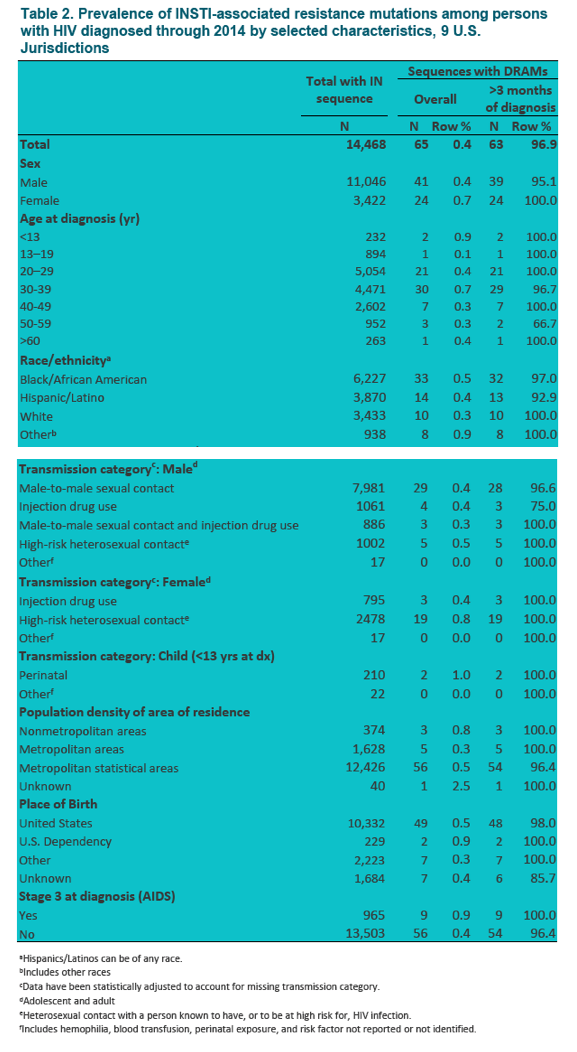 |
 |
 |
| |
HIV Integrase Genotypic Testing and Resistance in the United States-9 U.S. Jurisdictions
|
| |
| |
Download the PDF here
TWO REPORTED CASES OF ONLY PRIMARY INTEGRASE INHIBITOR DRUG-CLASS RESISTANCE TRANSMISSION INCLUDING THE FIRST REPORTED CASE OF PRIMARY ELVITEGRAVIR RESISTANCE
TRANSMISSION http://www.natap.org/2016/IDSA/IDSA_07.htm
Reported by Jules Levin
CROI 2017 Feb 14-16 Seattle, WA
Angela L. Hernandez1, M. Cheryl Banez Ocfemia1, Neeraja Saduvala2, Alexandra M. Oster1, Walid Heneine1, Jeffrey Johnson1, H. Irene Hall1
1Division of HIV/AIDS Prevention, Centers for Disease Control and Prevention, Atlanta, GA, U.S.A.; 2ICF International, Atlanta, GA, U.S.A.
Abstract Body:
In 2016, national drug resistance testing guidelines were updated to recommend providers include integrase (IN) genotypic testing at entry into HIV care if transmitted resistance to integrase strand transfer inhibitors (INSTI) is a concern. We used National HIV Surveillance System (NHSS) data to assess the prevalence of IN genotypic testing and INSTI-associated resistance.
We analyzed HIV-1 sequences from persons with HIV infection diagnosed through 2014 and reported to NHSS by December 2015 from 9 surveillance jurisdictions (Colorado, Connecticut, California [Los Angeles County], Michigan, New York, Philadelphia, South Carolina, Texas, and Washington). We describe (1) overall prevalence and timing of IN genotypic tests after HIV diagnosis (≤3 months and >3 months) by sex, age, race/ethnicity, transmission category, stage of HIV disease, population of area of residence at diagnosis, and antiretroviral use (ARV) at diagnosis, and (2) prevalence of INSTI-resistant associated mutations using the updated CDC HIV-1 surveillance mutation list.
We analyzed 14,468 IN sequences; 7,107 (49%) sequences were IN only. IN genotypic testing was more common among males, persons aged 20-29 years, blacks; by transmission category, more common among males with HIV infection attributed to male-to-male sexual contact, heterosexual females, persons who were not stage 3 of HIV disease (AIDS), and persons residing in areas with a population of >500,000. Prevalence of INSTI-resistant mutations among all IN sequences was extremely low (65/14,468; 0.4%). Of these, the most prevalent mutations were N155H (38%), followed by E92Q (29%) and G140S (25%). IN genotypic testing was performed ≤3 months after diagnosis for 5,240 (36%) persons, of which 4,631 (88%) had no evidence of ARV use; 2 (0.04%) had transmitted INSTI-associated resistance (N155H [100%]; E92Q [50%]).
INSTI-resistant mutations are rare and indicate that current INSTI-based regimens remain effective. A majority of genotypic testing for resistance to INSTIs occurs more than 3 months of HIV diagnosis likely after initiation of antiretroviral therapy. NHSS provides the opportunity to monitor IN genotypic testing and prevalence of INSTI-associated resistance at a population level.







This presentation was made possible with the contributions of HIV surveillance jurisdictions conducting Molecular HIV Surveillance who provided data to CDC
|
| |
|
 |
 |
|
|